by Lance Hill | Apr 28, 2025 | How To, Mirliton
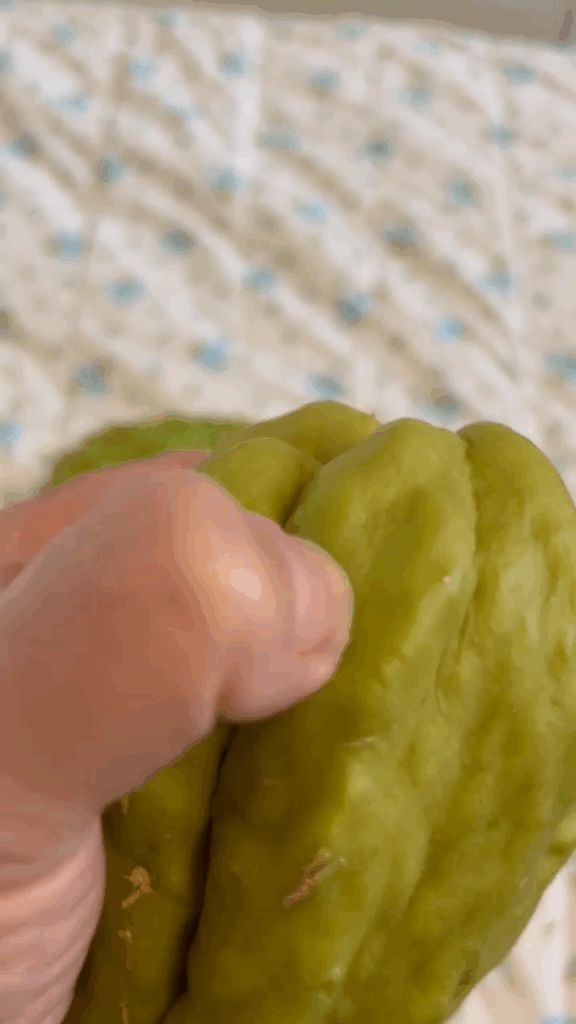
Tedra Erikson Stanley performing the thumbnail test.
Mirlitons are typically ready to harvest when they reach approximately 8 ounces, although size and weight can vary. The most reliable method for testing for harvesting is the thumbnail test.
Start by pushing on the fruit skin with your thumbnail. If the fruit skin dents or even seeps a little moisture, the fruit is still immature and will be too watery. If it is firm and does not dent, you are ready to pick. The old growers used to say, “My mirlitons are hard now and ready to pick.”
See Tedra Stanley’s video on how to do the test here.
At the hard stage, they are also mature enough to sprout and or use as seed. But once they begin to sprout, they’re too tough to cook.
by Lance Hill | Apr 23, 2025 | How To, Mirliton, Uncategorized

The spring harvest of mirlitons has increased in recent years due to advancements in growing techniques. The question is: How do we plant them?
There are two options: container-grown plants or planting them directly in the soil.
First, in either case, the fruit needs to be spouted. This ensures the seed is viable, and a sprouted mirliton means the roots and shoots are ready for soil and will quickly root and grow. You can expedite sprouting by incubating the fruit. If kept warm, they will sprout within 7 to 14 days. Read how to do it here. (We encourage growers to also incubate their sprouts before selling or gifting them, for the same reasons.)
Once the seed has sprouted:
Container planting: Plant it in a 3-gallon container and keep it outside in the shade for the summer. Use a small tomato cage for a trellis. Mirlitons can be easily pruned back to maintain a compact shape if desired. Transplant them into the ground in September, after the danger of the heatwave has passed. Cut it back and mulch it in November, or tent and heat it for the entire winter. Either way, you’ll get a good spring crop. Use the bamboo stake technique for gauging watering needs.
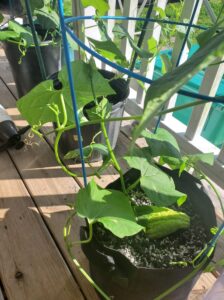
Mirlitons trellised on tomato cages.
Direct planting: This is a little more tricky. You can plant sprouts in May or June, but they will need to be initially shaded from the heat of direct sunlight. Place a milk crate over the plant, covering it with a 40% shade cloth or a piece of cardboard to protect it from the sun’s rays. After it starts to grow foliage, remove the crate and shade. Read about shading it here. Use the standard methods for bed preparation in the quick guide
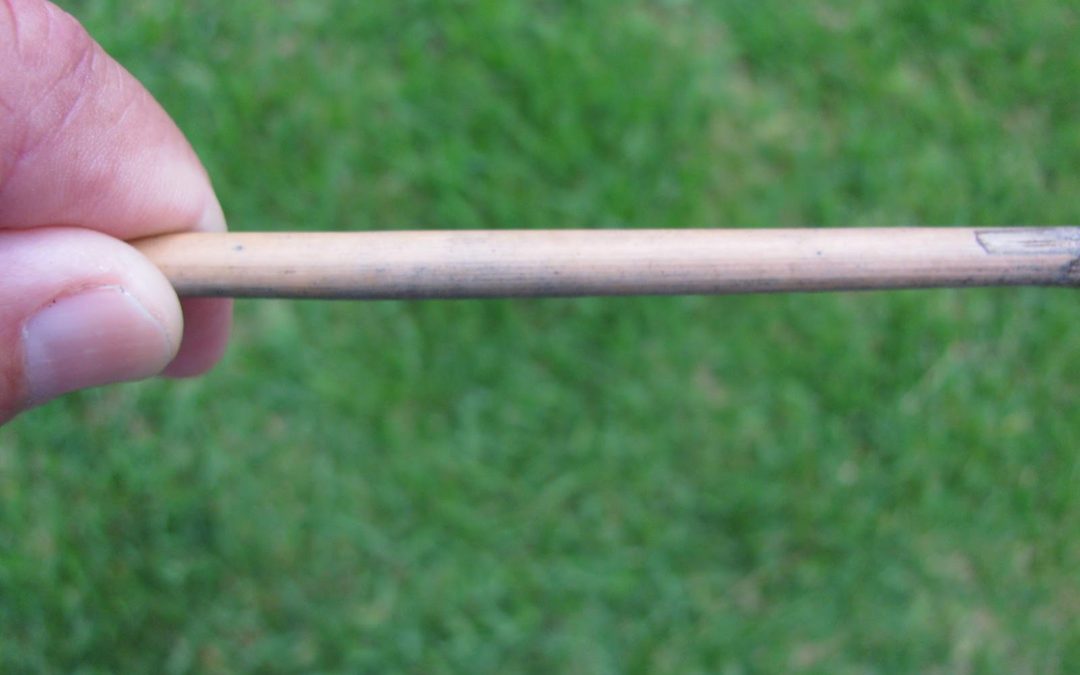
by Lance Hill | Apr 12, 2025 | How To, Mirliton
I realize that this sounds like a strange idea, but experienced container plant experts have been using wooden skewers and chopsticks to gauge soil moisture for years. The principle is simple; moist particles of soil adhere to the wood. A clean skewer means the soil is too dry, a muddy skewer means too much moisture, and a stake flecked with large soil particles means the moisture is fine. The same principles apply to using a large bamboo stake in your raised bed or garden.
The two methods gardeners often use are the second-knuckle method and the electric meter method. In the knuckle method, you insert your finger down to the second knuckle and feel if you feel moisture at the tip. That gives you a good reading of the soil moisture in the first two inches, but the mirliton root zone is much deeper than that. You need a reading of soil moisture from 1-6 inches, and a finger can’t do that.
The other popular method is a sleek moisture meter. But there are several problems. The probe does not tell you what is happening at all levels. It rounds it off to one reading. Plus, the meter is set in the factory to a specific soil type. It has no idea about the unique qualities of your soil, such as porosity, particulate size, clay content, and amendments. That makes for unreliable readings. I think they are useful with house plants, but not with gardens.
The bamboo stake uses your senses and can adjust to any soil conditions. Look and feel are important gardening tools. (A bamboo stake will work for raised beds. But the most accurate method to prevent overwatering or underwatering your mirliton is the inexpensive stainless steel soil sampler.
Steps for Using the Bamboo Stake Soil Moisture Gauge:
- Use a standard ½-inch diameter bamboo tomato stake with no lacquers or plastic. Coverings can throw off the measurements. Make sure the stake is dry. I leave mine out all day.
- Select a place about 6 inches from the plant base. You can choose a different place each time if you are afraid of harming the roots.
- Shove the stake straight down about 6-12 inches and wait a couple of seconds, then pull it up quickly.
Read the stake:
- A relatively clean stake means soil moisture is low, and you need to water. (photo 1)
- A slightly smeared or dirty stake, particularly in the first two inches, means the plant has more than enough available moisture and needs no water. (photo 2)
- An evenly distributed number of soil particles (crumbs), the length of the stake means the plant needs no water. (photo 3)
Wipe off the stake and set it aside to dry.
Learn from the stake:
Make a mental note of what the stake looks like each time you test or take a photo. You will see that it gives you a graduated reading–each particle of soil represents the available moisture at that specific level. The bottom of the stake will show the moisture at the deepest level. You can learn from the tests: Do the test the day after you water or when it has rained so you see what good soil moisture looks like on the stake.
If you want a more precise moisture reading that uses both appearance and feel of the soil, upgrade to the metal soil sampler
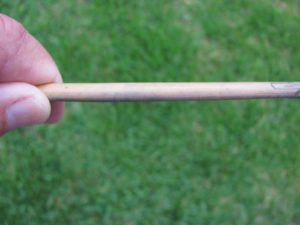
FIg. 1. Clean bamboo stake means low soil moisture and you need to water the plant.
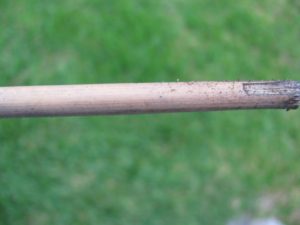
Fig. 2. A light coating of soil particles indicates good soil moisture. Note that the slightly muddy tip of the stake means the soil is getting saturated at the deepest level. No need to water.
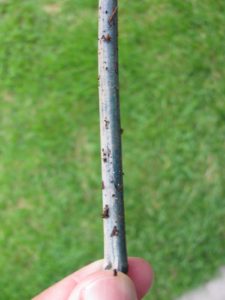
Evenly distributed flecks (crumbs) of soil indicate good soil moisture at all root zone levels. No need to water.







Recent Comments